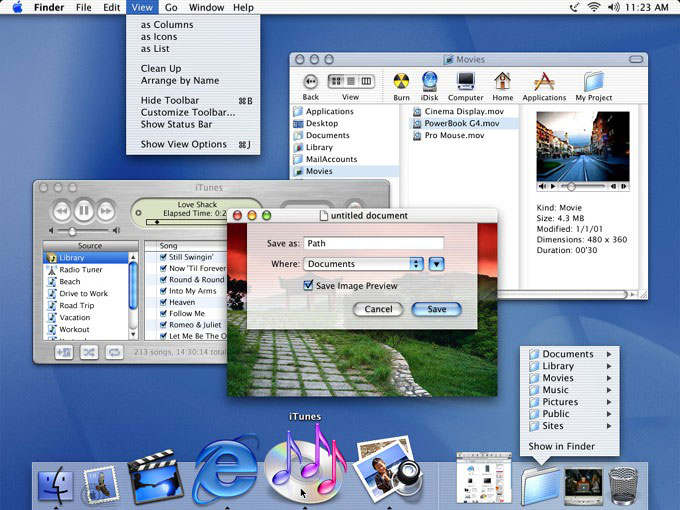Quickdraw 3d 1.6 For Mac Os 9
Vintage Mac Software Library Getting a beige Mac up and running can be very challenging these days. Older software updates are very hard to find, and of course you need Stuffit to download Stuffit:) This web page is my attempt at getting everything you could ever need together in one place. Quesa is a cross-platform, open-source project to re-implement QD3D under the LGPL license. The primary goal is to provide API and binary compatibility with Apple's QD3D 1.6, but at the same time, Quesa has surpassed its predecessor in several ways. The new release increases compatibility with the QD3D 1.6 API, includes over a year's worth of bug fixes and new features, and supports Mac OS 8/9, Mac OS X (Carbon or Cocoa), Linux, Windows, and Be.
Version.2 (1996), showing a QuickDraw-3D-based QuickDraw 3D, or QD3D for short, is a developed by (then Apple Computer, Inc.) starting in 1995, originally for their computers, but delivered as a cross-platform system. QD3D was separated into two layers. A lower level system known as RAVE (Rendering Acceleration Virtual Engine) provided a with functionality similar to or cut-down versions of like. On top of this was an object-oriented system, QD3D proper, which handled model loading and manipulation at a level similar to. The system also supplied a number of high-level utilities for file format conversion, and a standard viewer application for the Mac OS. QD3D had little impact in the computer market, both as a result of Apple's beleaguered position in the mid-1990s, as well as several fateful decisions made by the design team about future changes in the 3D hardware market that did not come true. Apple abandoned work on QD3D after took over in 1998, and announced that future 3D support on Mac OS would be based on.
Contents • • • • • • • OpenGL in the 1990s [ ] The canonical 3D API of the 1990s was OpenGL. This had been written by and initially closely matched the capabilities of their systems, operating as a hardware abstraction layer. The OpenGL API consisted mostly of state-setting instructions for setting up drawing modes like the paint color or camera position, and system for sending geometry into the system, normally as meshes of triangles. The combination of these instructions was saved into a which was then rendered to produce the output. OpenGL lacked many features that are needed to produce a complete 3D program.

Saving and loading geometry data, collecting that data into groups to produce model objects, and the control of state was all left to the programmer. This was considered to be an advantage in an era when performance was limited and direct control over these sorts of functions was a route to improved performance.
However, this lack of high-level functionality did make it more difficult to quickly write simple programs, as well as leading to a lack of interoperability. A number of efforts started to provide standardized higher level APIs, like OpenGL++ and (later), which handled many of the more common bookkeeping tasks like loading geometry from files and providing a display. These standardized systems meant the programmer only had to provide the GUI for the program. Best office suite for mac.
Show box for mac. Download and install new showbox app for Mac using this awesome work around. Use Show box for macbook to stream free movies, shows and series online.
While OpenGL is mostly low-level, it did include some higher-level concepts that were only really used on SGI systems. This led to another series of APIs that removed these features to make it easier to implement on common hardware. The best known of these is, which is not a separate API, but simply a list of those functions in OpenGL that are guaranteed to be supported across all hardware, thus ensuring that a program limiting itself to those calls will run with maximum performance.
QD3D [ ] QD3D was designed from the start to operate on computers with considerably less power than workstations. This led to a concerted effort to cleanly separate the upper and lower layers of the API, with the lower-level RAVE system being closer to MiniGL from the start. This had the advantage of providing a clean and minimal API that could be more easily ported to different hardware. Since only RAVE needed to be ported, the upper layer APIs could be made as complex as desired, and the QD3D system included a complete scene graph, a standardized model file format, 3DMF, and even basic GUI objects that utilized them. To write a simple application in QD3D, the programmer only had to include a few libraries and then place the GUI elements in their program using or similar tools. Additional functionality included a 'plug-in' rendering system, which allowed an application to render a scene in a variety of styles.





